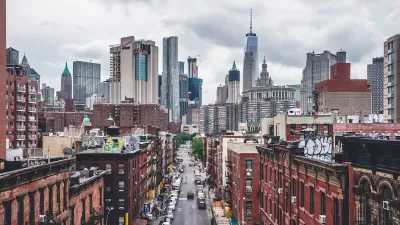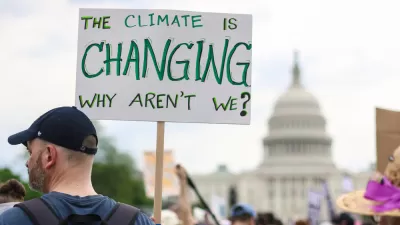The first Earth Day was celebrated on April 22, 1970. Since then we've discovered an incredible amount about the Earth in addition to doing the planet an incredible amount of irrevocable harm.

A "listicle"-style post by Brad Plumer commemorates the 45th occasion of Earth Day by noting seven of "the most surprising, encouraging, and worrisome things we've learned since the last Earth Day about the only planet where life is known to exist."
The list includes:
- A mapping program run through the Scripps Institution of Oceanography at UC San Diego announced that they'd found 15,000 new seamounts as thet used satellite measurements and gravity modeling " to publish the most detailed maps ever of the ocean floor."
- "A major study by the World Wildlife Fund estimated that the overall number of mammals, birds, reptiles, amphibians and fish has declined 52 percent between 1970 and 2010 — far more than anyone realized."
- According to Plumer, "in July 2014, we learned that there are at least five of these floating garbage patches around the world." In addition, a 2015 study in Science calculated that between 5 and 13 million metric tons of plastic waste enter the ocean every year.
- As a final point, Plumer also details the ongoing debate about the commencement of the Anthropocene era. Was it 1610, when residents of the Old World began quickly colonizing and altering the human and natural landscapes of the New World, or was it 7,000 years ago when humans first began clearing forests for agriculture?
FULL STORY: 7 things we've learned about Earth since the last Earth Day

Maui's Vacation Rental Debate Turns Ugly
Verbal attacks, misinformation campaigns and fistfights plague a high-stakes debate to convert thousands of vacation rentals into long-term housing.

Planetizen Federal Action Tracker
A weekly monitor of how Trump’s orders and actions are impacting planners and planning in America.

Chicago’s Ghost Rails
Just beneath the surface of the modern city lie the remnants of its expansive early 20th-century streetcar system.

Bend, Oregon Zoning Reforms Prioritize Small-Scale Housing
The city altered its zoning code to allow multi-family housing and eliminated parking mandates citywide.

Amtrak Cutting Jobs, Funding to High-Speed Rail
The agency plans to cut 10 percent of its workforce and has confirmed it will not fund new high-speed rail projects.

LA Denies Basic Services to Unhoused Residents
The city has repeatedly failed to respond to requests for trash pickup at encampment sites, and eliminated a program that provided mobile showers and toilets.
Urban Design for Planners 1: Software Tools
This six-course series explores essential urban design concepts using open source software and equips planners with the tools they need to participate fully in the urban design process.
Planning for Universal Design
Learn the tools for implementing Universal Design in planning regulations.
planning NEXT
Appalachian Highlands Housing Partners
Mpact (founded as Rail~Volution)
City of Camden Redevelopment Agency
City of Astoria
City of Portland
City of Laramie





























